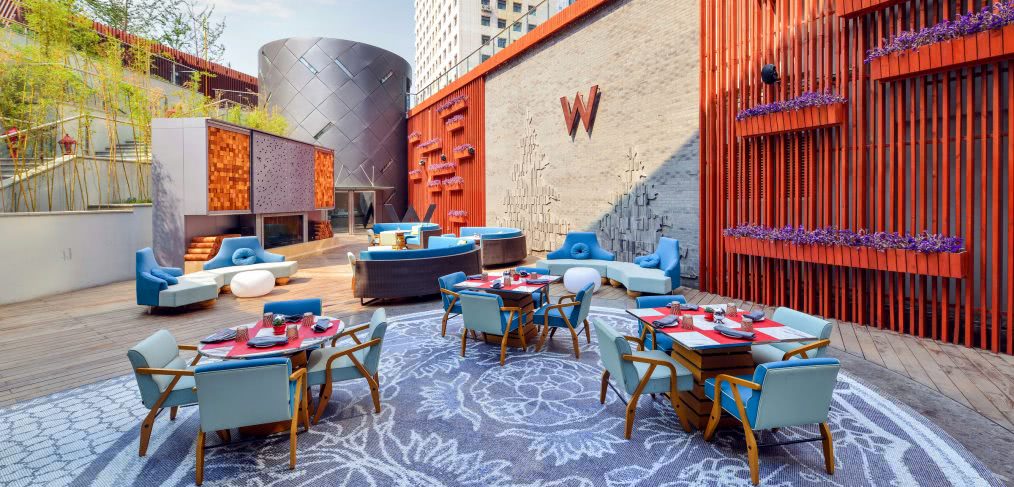
New Year, New Ideas: What to Expect from the Hospitality Industry in 2017
CRTKL’s Clay Markham and Caye Burry discuss the future of hotels and travel.
We can’t talk about travel and hospitality today without acknowledging the Airbnb in the room: according to Phocuswright, 30% of leisure travelers in 2015 used private accommodations, up from 10% in 2011, and this number continues to trend upward. There’s little doubt that the home-sharing phenomenon met the modern traveler exactly where she was at exactly the right time. With travel budget tight, the desire to explore off-the-beaten-path destinations ripe and the inclination to share the experience on social media strong, Airbnb and its start-up brethren have undoubtedly changed the nature of travel forever.
CallisonRTKL isn’t the first to gauge the impact of this movement on traditional hotels, but our design professionals are in a unique position to help the industry adapt and keep pace with the demand for localized, distinctive travel experiences. From food and beverage to entertainment and dynamic common areas to tailored guest rooms, hotels are changing up the formulaic brand strategy of old to cater to a more sophisticated and discerning traveler.
“The pressure is on for hotels to provide a more authentic guest experience, both from a design and a delivery standpoint,” said Clay Markham, senior vice president and hospitality sector leader for CallisonRTKL. “It’s been telling that we’ve seen several major chains, like Accor Hotels and OneFineStay, go from doing battle to doing business with home-sharing services. What comes from that is yet to be seen—they’ll incubate until they find out it makes sense or not—but they are actively looking at the best of what home-sharing has to offer and thinking about how to cross-pollinate it with their own brand strategy.”
For some brands, partnering with home-sharing services opens up new opportunities and markets, so it is likely that the industry will see more of this as time goes on. The sharing economy is here to stay, and if the hospitality industry expects to thrive, it would be better served by looking at this new reality as an opportunity for growth rather than an obstacle to it.
Mirror Reflection
Within this context, hotels are starting to look a little different; they’re becoming mirror reflections of their locale.
“Using the essence of the brand as a starting point, we’re really designing in a way that makes the hotel look like the city it’s in,” said Markham. “If a traveler is looking for an experience that plugs them right into their destination upon arrival, they want their hotel to create that local vibe.”
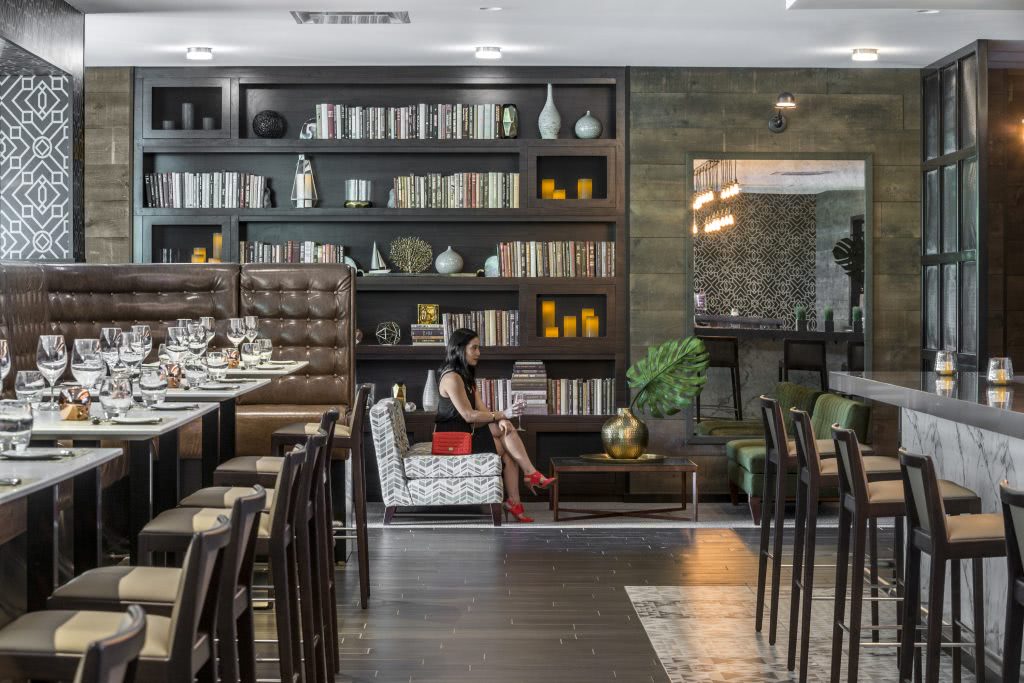
The color palette, wood finishes and locally sourced materials at Geneva Ridge Resort, a 146-key property in Geneva Lake, Wisconsin that recently received a $4.9 million makeover, are directly inspired by the resort’s stunning natural surroundings.
Commissioning community artists is a popular way to inject the interior with local flavor; the same goes for artisan goods like toiletries, linens and in-room snacks and beverage. While this approach caters mostly to leisure travelers looking for an immersive cultural experience, it is increasingly appreciated by business travelers. According to Lifestyle Habits of the 24/7 Business Traveler, a 2015 report produced by Skift (an industry intelligence platform focused on travel and hospitality) and American Express, 30 to 40% of business travelers—depending on how frequently they travel—will extend work trips to spend time with friends who live in the area, do some sightseeing on their own or have family join them.
The hotel’s operations may also begin to shift in the direction of increased dependence on relationships with the local community. Nowhere is this more relevant than in dining; the hotel restaurant has been promoted from back-of-house to front-of-house and often features a local celebrity chef at the helm.
“Luke Bujarski of Skift said, ‘Food has always been a big deal for destinations, but now it’s mission critical…culinary tastes have evolved and matured; expectations are higher than ever.’ I couldn’t agree more,” said Markham. “Hoteliers have to find a way to provide an Instagram-worthy dining experience and that may even mean going off-site to build partnerships with restaurants in the community.”
The New Age of Travel
Speaking of Instagram, it’s no secret that hotels the world over are retooling their brand strategy to target millennials. It makes sense given that, according to Eventbrite’s 2015 report on the “experience economy,” three in four members of this oft-discussed generation would rather spend their money on an experience or event rather than a product or service.
In response, Marriott launched Moxy Hotels; Starwood has Aloft; Hilton has Canopy and Intercontinental has EVEN Hotels. Whether the hotel offers tech-savvy applications that ease the check-in experience or wellness-centric amenities that cater to the generational fitness obsession, all of these represent a strategic diversion from business as usual. But changing things up doesn’t come without its challenges.
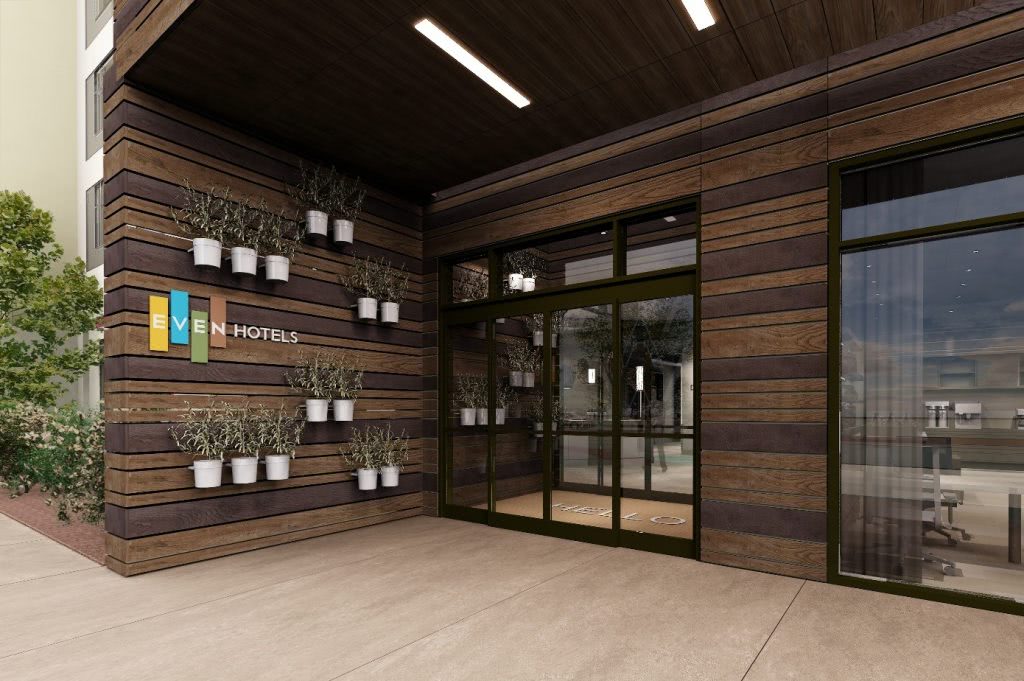
CallisonRTKL’s prototype for EVEN Hotels.
“Millennials have a certain price tolerance to guestroom rates; that can prove difficult for a new brand trying to find its way. Smart hoteliers targeting a particular demographic are turning to adaptive reuse projects and conversions to fuel their start-up. This allows their new focused brand to hit the market more quickly with reduced costs,” said Markham. “But the very best thing about all of this is that authentic design is enjoying a boom, killing off the homogeny of the cookie-cutter hotel once and for all. And when it comes down to it, the basic tenet of that approach—refreshing, experiential design—is something that appeals to all generations.”
The Tech Revolution
Even with the increase in availability for free public Wi-Fi, it’s still the top amenity on a traveler’s priority list—even those wealthy travelers with greater capacity to pay for it. According to the 2016 U.S. Luxury Travel Report from Resonance Consultancy Ltd., 58% of travelers place Wi-Fi ahead of any other hotel amenity in importance.
New tech infrastructure such as Passive Optical Networks (PON) and other products offer essentially unlimited bandwidth to the guest and untethered internet access anywhere on the property. These fiber-optic solutions are being implemented by some of the industry’s largest flags and are revolutionizing the market.
But in a world where technology pervades nearly every aspect of our daily lives, hoteliers are looking to more than Wi-Fi to make the guest stay more convenient and engaging. A solid Wi-Fi network is only the basic framework enabling the most ground-breaking new tech tools to be deployed.
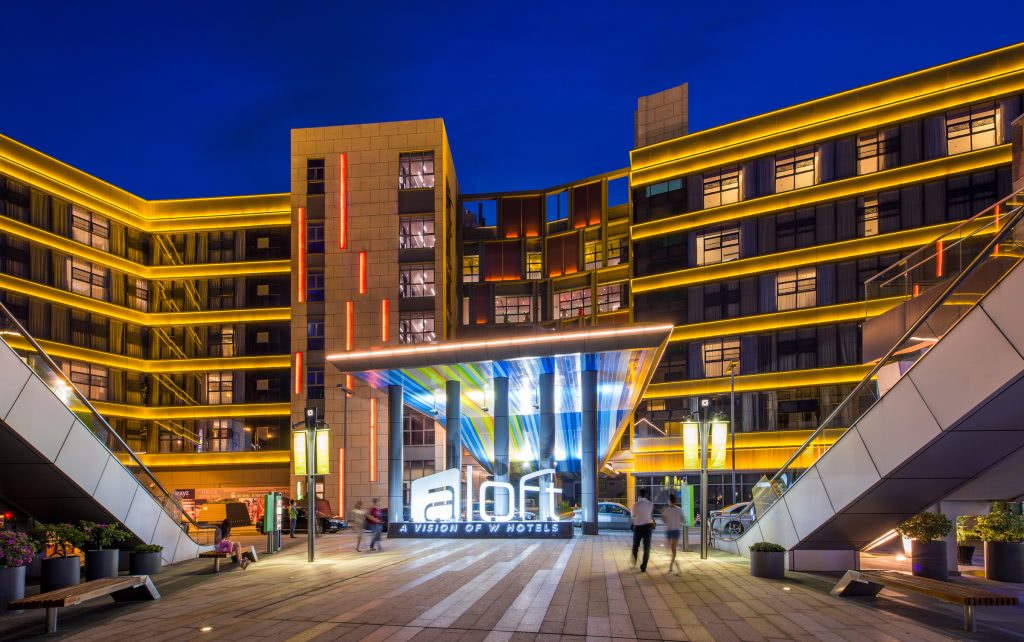
Located in close proximity to the Songshan Lake National High-Tech Development Zone, Starwood’s Aloft Dongguan caters to tech-savvy travelers with apps aimed at easing the guest experience.
“For back-of-house operations in particular, building automation technologies are making single interface management platforms possible. The entire facility can be controlled from a single terminal, an app or a portal anywhere in the world,” said Markham. “This is simplifying ongoing maintenance and in-room troubleshooting and giving operators the ability to address many issues remotely.”
Take ALICE, a platform that tracks every guest request and connects hotel staff cross-departmentally so that they can work together to service guest needs. Not only that, but it provides performance data that helps hotels improve and streamline operations moving forward.
The “smart hotel” also leverages technology to ease the guest experience and empower guests through information sharing. From automatic check-in and check-out to virtual room keys and in-room monitoring and controls, the bar is constantly being raised on convenience. In some hotels, smartphone apps reference a user’s GPS location to give them access to special offers from nearby restaurants, shops or cultural institutions or provide recommendations for things to see, do and eat or drink. Other concierge apps allow a guest to chat with hotel staff in real time to arrange outings and activities.
Getting Down to Business
CallisonRTKL’s hospitality design group prides itself on design solutions rooted in a deep understanding of the business of hotels, so a discussion on trends does not come without thorough consideration given to the impact on the hotelier’s bottom line.
“The cost of carrying the asset is getting higher, both in terms of property and back-of-house operations,” said Markham. “Fortunately, the trends we’re seeing—local community partnerships, technology that enhances efficiency and service—are helping to mitigate the impact of that cost.”
How so? The modern traveler simply does not require as much time or space to be accommodated. Guest rooms are getting smaller while common spaces, with the potential to create additional revenue streams and facilitate a more social stay, are getting larger. Smartphone apps that expedite things like room service and dispatch other services, like housekeeping, only when truly needed save time and resources on the operational end. And partnerships with local restaurants or event venues mean that the traveler enjoys a more immersive experience while hotels are able to focus on what they do best—heads in beds—resulting in maximized efficiency and revenue.
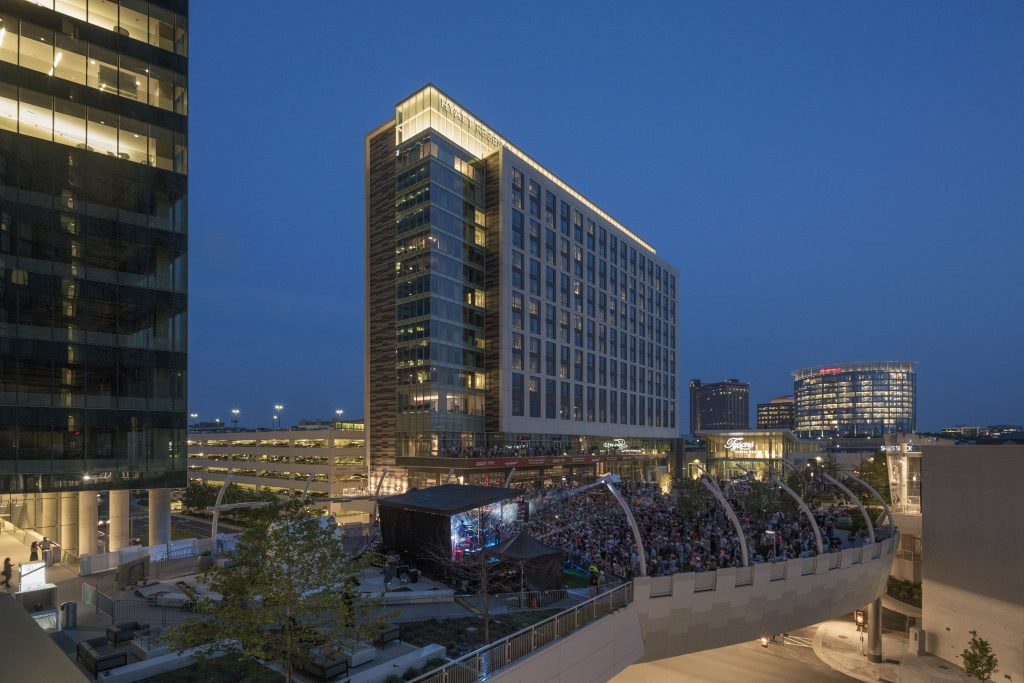
The award-winning Hyatt Regency at Tysons Corner in Tysons Corner, VA benefits from a seamless connection to a wildly popular outdoor plaza and the Washington, DC Metrorail system.
“What we’re going to see in the hotel of the future is that relationships are everything,” said Markham. “Developers can purchase a smaller physical asset and operators can compensate by building connections with other spaces and services, which in turn enhances the hotel’s profile in the community. And while brands branch outward and form partnerships, they will consolidate within to create a more efficient model and deliver a seamless experience to the guest.”
———————————————————-
 Clay Markham
Clay Markham
Clay Markham leads the hospitality sector with a dynamic design and management approach to architecture, interior design and construction management. Through more than 30 years in the industry, Clay has worked extensively on international projects, allowing him to apply diverse market experiences to a variety of project types from single-use environments to large-scale master plans to mixed-use projects. His compelling designs and successful project delivery skills have resulted in award-winning projects for top-tier clients including Marriott, Starwood Hotels and MGM Mirage.
